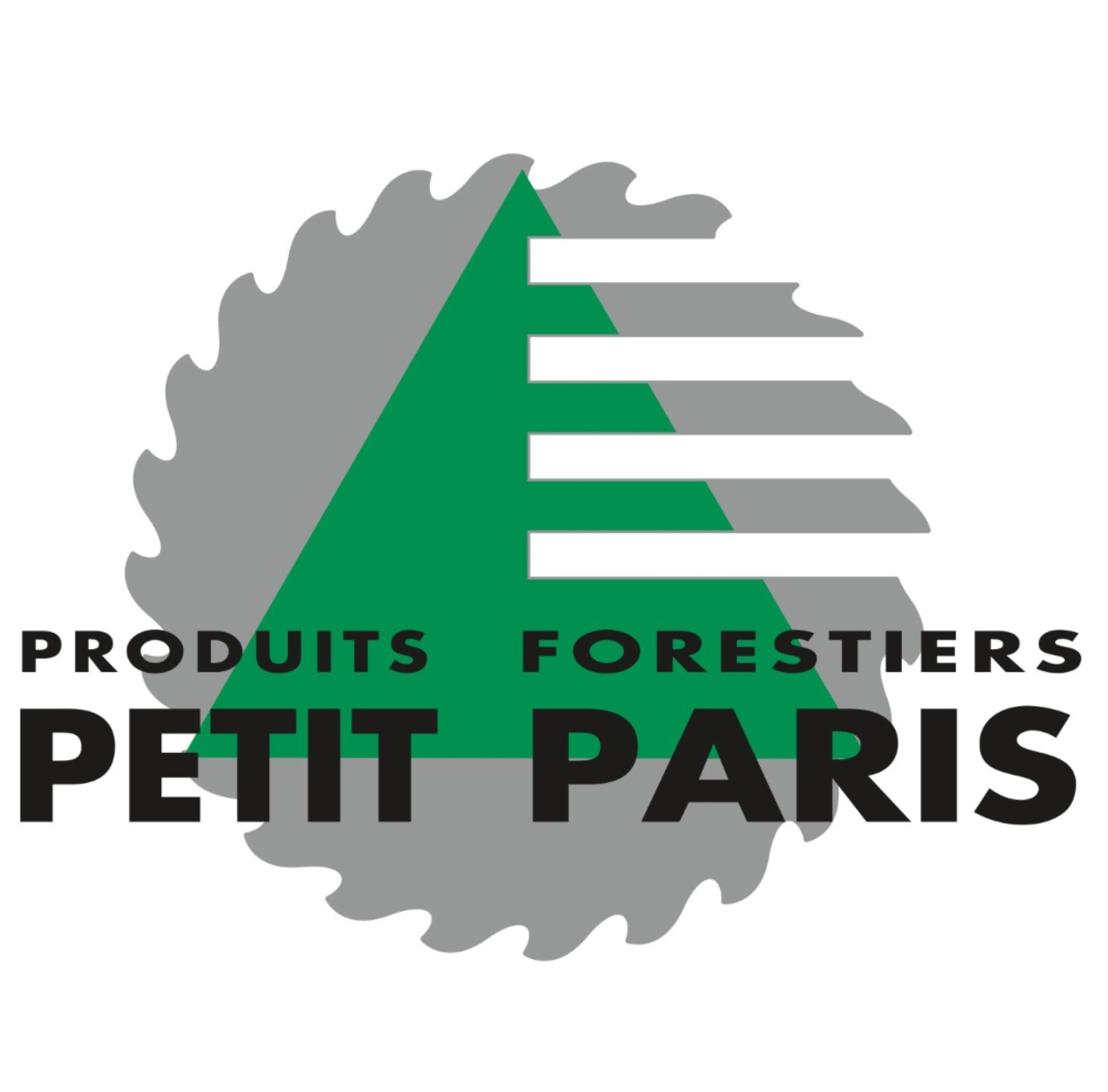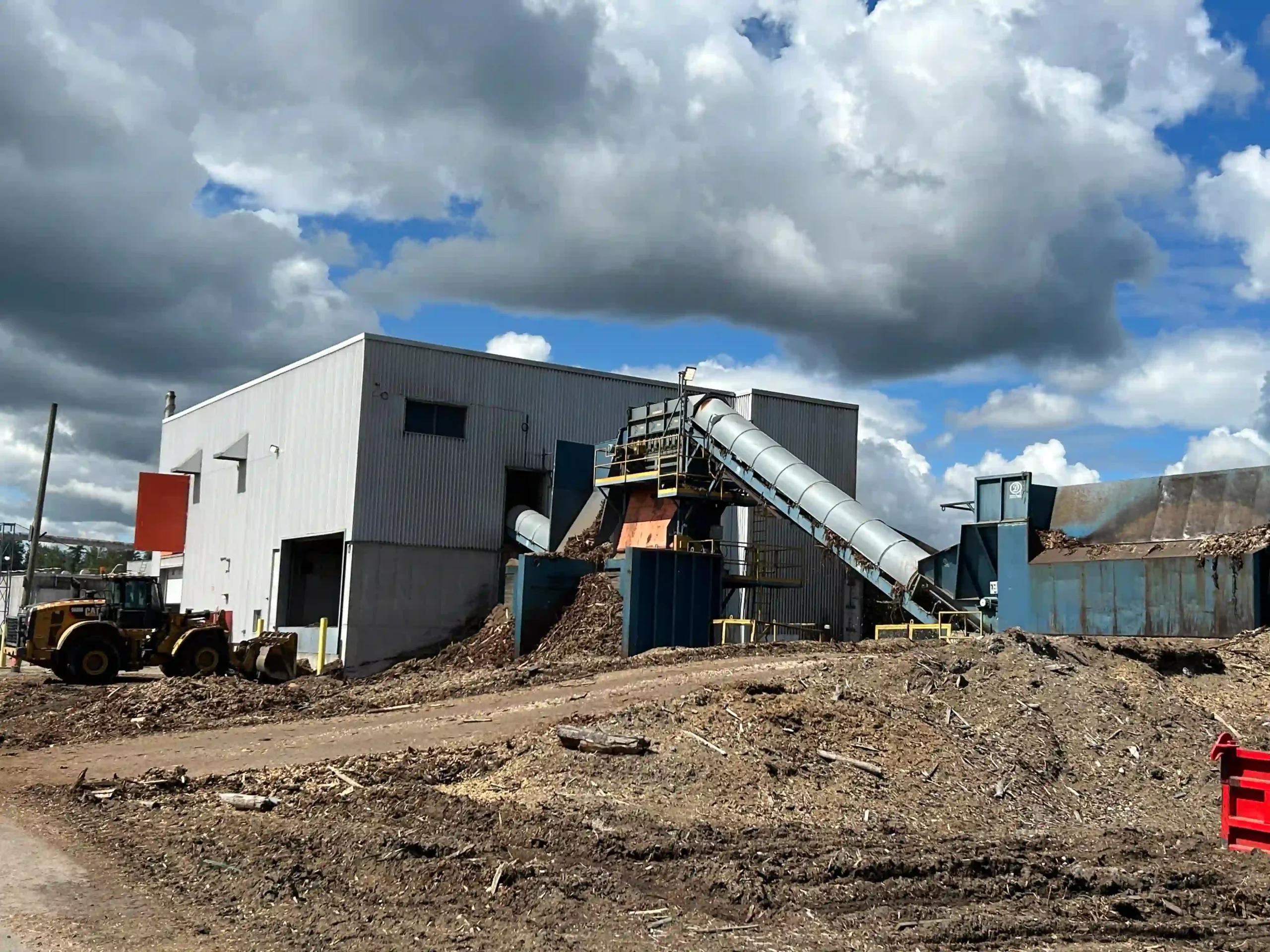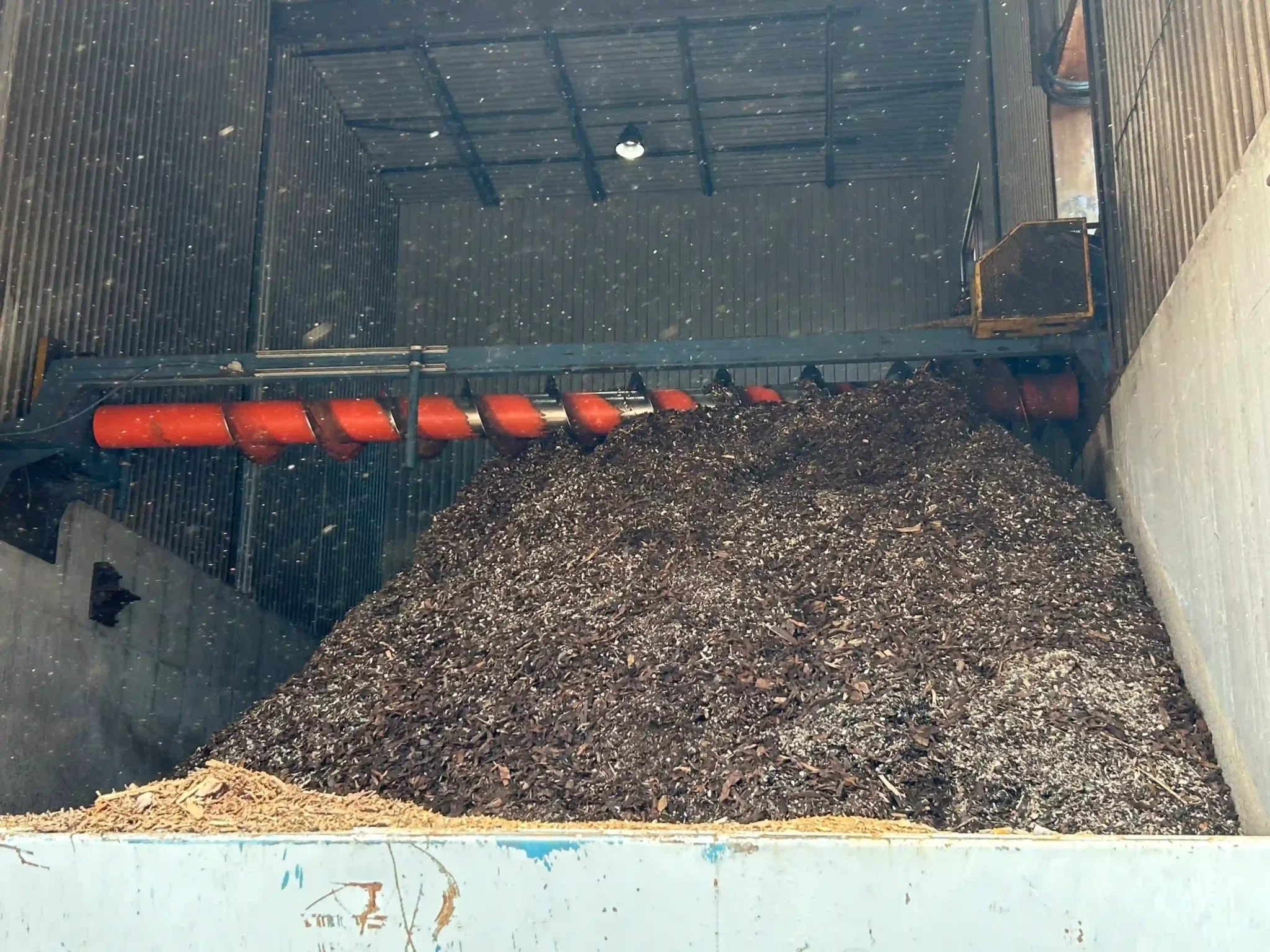FORESTRY: CASE STUDY
A Small Business That Makes a Difference: Produits Forestiers Petit Paris Journey Towards Sustainable Forest Management

Illustration
Produits Forestiers Petit Paris, the main subsidiary of Coopérative Forestière de Petit Paris, is an integrated lumber sawing, drying and planing complex producing around 110 million FBM (Board Foot Measure) annually.
Backed by many years of experience, the company stands out for its commitment to environmental sustainability and responsible management of forest resources. The company offers a diverse range of products, including wood planks, lumber products, beams, wood siding and more.
Sustainable Community member information

- Name: Produits Forestiers Petit Paris
- Sector: Forest industry
- Sub-sector : Wood processing
- Organization type : Business / SME
- Location: Saint-Ludger-de-Milot, QC, Canada
Produits Forestiers Petit Paris Climate Challenge
The use of heavy fuel oil for the kettle used to dry lumber was one of the significant environmental aspects that Produits Forestiers Petit Paris had identified as a priority issue for reducing its ecological footprint.
Indeed, in response to climate change, and with a view to sustainable development, reducing the greenhouse gases (GHGs) emitted by oil combustion became a priority for the organization.
The target was simple in itself: to modernize facilities in order to stop using fossil fuels, which are the main contributors to GHG emissions.
Your commitment to decarbonization
Production of carbon credits
Would you like to finance your GHG reduction projects like Produits Forestiers Petit Paris? Register to the Sustainable Community, generate free carbon credits and boost your long-term decarbonization strategy!
Purchase of carbon credits
Do you appreciate sustainable community projects like those carried out by Produits Forestiers Petit Paris? Buy verified carbon credits today to support WILL and achieve carbon neutrality or net zero!
Actions implemented to decarbonize forests
2018
Join the Sustainable Community
1
carbon footprint measurement
10
listed buildings and infrastructures
2
Types of GHG reduction projects developed
7
years of carbon commitment
2018
Join the Sustainable Community
1
carbon footprint measurement
10
listed buildings and infrastructures
2
Types of GHG reduction projects developed
7
years of carbon commitment
3 types of GHG reduction projects have been developed by the company to decarbonize its value chain. The ecological projects fall into two categories: waste management (86 micro-projects) and energy conversion.
#1 Valorization of biomass residues (since 2010)
Since 2010, Petit Paris has been recycling between 50,000 and 60,000 tonnes of wood residues per year, which were previously sent to landfill. This initiative has significantly reduced emissions of methane, a powerful greenhouse gas, from landfill sites. By recovering and reusing these biomass residues, the company optimizes the management of its natural resources while minimizing its environmental impact. This project represents an innovative and sustainable approach to waste management, while contributing to a significant reduction in pollutant emissions.
#2 Kettle to biomass conversion (2017).
In 2017, Petit Paris made a strategic decision to reduce its carbon footprint by converting its kettle powering the wood dryers from heavy fuel oil to a biomass solution. This transition reduced GHG emissions by over 90%, while eliminating a major source of pollution. The company now uses wood residues from its own operations as an energy source, making the switch not only environmentally friendly, but also economically advantageous thanks to reduced operating costs. This initiative demonstrates Petit Paris’ commitment to renewable and sustainable energy.
#3 Paper and cardboard recycling (since 2010)
Since 2010, Petit Paris has been implementing an ambitious project to recycle paper and cardboard, materials previously destined for landfill. Thanks to an optimized sorting and recycling system, the company has considerably reduced the volume of waste sent to landfill. This change has not only improved the management of residual materials, but also reduced GHG emissions, particularly those linked to the decomposition of waste in landfill. This project reflects Petit Paris’ commitment to responsible environmental practices and to contributing to a more sustainable future.
Produits Forestiers Petit Paris testimonial: Sustainable community according to David Boivin
“In 2017, following the investments made and the implementation of a biomass boiler, Produits Forestiers Petit Paris was looking for a way to highlight the lower atmospheric emissions from its facilities.
Our objective has always been to use the gains generated by our project as a springboard to finance future projects, particularly the management and valorization of our wood residue piling sites. WILL acts as a facilitator for us towards the voluntary carbon credit market. All we have to do is respond annually to various requests (volume, production, consumption) concerning our activities, and WILL takes care of the rest, like a turnkey solution.
Without their input, it would be unthinkable for us to make sales on the carbon market, given our lack of knowledge, the challenges of accessing potential customers, and our limited human and financial resources. Over and above the sums of money paid to us, our corporate image is enhanced because our association with Will enables us to quantify and report on our performance.”
Mon engagement carbone corporatif
Decarbonization Strategy Results
tonnes of Co2e reduced (since 2010)
tonnes of Co2e reduced annually in one year (2018 figures)
CAD paid to the member in one year (2023 figures)
More results:
The transition of the kettle to biomass has enabled us to stop using heavy oil altogether. On average, 900,000 liters of fuel were burned annually in our facilities, representing savings of nearly $550,000. Unlike many other players in the wood processing sector, the company did not opt for propane technology, as the use of biomass was more than logical. In fact, using biomass is virtually cost-free, as it comes from the SME’s own industrial process. Finally, between 50 and 60,000 tonnes of wood are diverted from landfill and recycled annually by the company!
Climate change and future projects for Produits Forestiers Petit Paris
Produits Forestiers Petit Paris’ future climate action will be twofold:
- Firstly the reclamation of the wood residue piling sites located at the heart of their facilities. Their presence generates considerable GHG emissions, as well as polluting water.
- Secondly, the electrification of heavy equipment will be analyzed in the medium term, once technologies have demonstrated their efficiency and reliability.
The forestry industry plays a central role in solutions for capturing atmospheric emissions through carbon sequestration in wood. Products made from timber then trap greenhouse gas emissions in walls, floors and roofs, demonstrating the potential of wood materials in the fight against climate change.
WILL's Eye: decarbonization highlights for the forestry sector
Here are some key tips for companies in the forestry sector to help reduce their carbon footprint and contribute to the fight against climate change.
1. Carbon footprint monitoring and management: Regularly measure your carbon footprint to understand the sources of emissions and set reduction targets. Set up monitoring and management systems to track progress and adjust practices accordingly. Will can help you measure your carbon footprint!
2. Sustainable forest management: Adopt sustainable forest management practices to ensure the regeneration and conservation of forests while maximizing their carbon storage capacity. Obtain forestry certifications (such as FSC or PEFC) to demonstrate your commitment to sustainability.
3. Reduce harvesting emissions: Optimize harvesting operations to minimize the use of fossil fuels and the associated carbon footprint. Explore more efficient and energy-saving harvesting methods, such as the use of electric or hybrid machines.
4. Responsible waste management: Valorize wood residues and by-products from wood production to avoid their anaerobic decomposition and the release of methane, a potent greenhouse gas. Look for opportunities to recycle and reuse materials from forest production.
5. Green transport and logistics: Optimize your transport operations by using cleaner vehicles, minimizing empty runs and promoting multimodal transport. Use cleaner alternative fuels, such as biodiesel or electrification of vehicle fleets.
6. Invest in green technology: Explore cutting-edge technologies, such as carbon sequestration, to increase the carbon storage capacity of your forests. Invest in renewable energy systems to power your operations, such as solar or wind power.
7. Collaboration and awareness-raising: Collaborate with other forest industry players to share best practices and decarbonization solutions. Raise awareness of your decarbonization efforts among stakeholders, including employees, customers and investors.
8. Climate change adaptation measures: Anticipate the effects of climate change on your forests and develop appropriate adaptation strategies. Invest in management practices that strengthen the resilience of your forest ecosystems.
By implementing these tips, forestry companies can play a key role in reducing carbon emissions and preserving forests, while contributing to the global fight against climate change!







